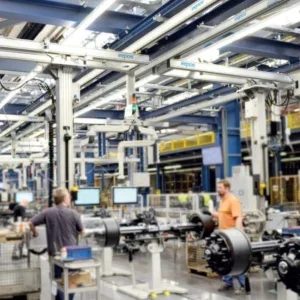The call was from a health and safety practitioner who was concerned at the way a contractor was proposing to lift and manipulate a series of identical loads to install them. The loads in question were long and slender fabrications with a rather delicate GRP (glass-reinforced plastic) surface. With the benefit of e-mail he showed me photographs of one of them.
The load hung beneath a lifting beam that was made up of a longitudinal member with a shorter cross-member at one end. It hung from each end of the member from two webbing slings in basket hitches.
Someone decided that the load needed to be supported better, and had fabricated a cradle. The cradle comprised a GRP shell lined with a carpet-type material, and was stiffened by what looked like scaffold tubes secured with plastic cable ties. The appearance certainly didn’t inspire confidence. And it clearly hadn’t been successful; the result was visible as cracking on the load’s surface.
The damage had occurred when it was loaded on to the deck of a barge. Even more worrying was the next stage, when the load was to be lifted high into the air for installation in weather conditions where wind would certainly be a factor. I could easily see why my caller was concerned that there was a risk of dropping the load and endangering workers around it.
It turns out that these loads were usually lifted in a purpose-designed cradle which attaches to the load at the appropriate places and holds it securely. The cradle was elsewhere, however, hence the alternative solution and the resulting problems.
With sufficient skill it is generally possible to lift most loads with general-purpose equipment. However, it is not always as easy, and often requires far greater skill than when purpose-designed equipment is used. Moreover, when lifting a series of identical loads, it quickly becomes more economical and efficient to use purpose-designed equipment.
In this case the design was already established and it just required the forethought to have another cradle made. In the context of the overall budget, the cost of the cradle surely would barely be visible. The alternative solution dramatically increases the risks to both people and load.






